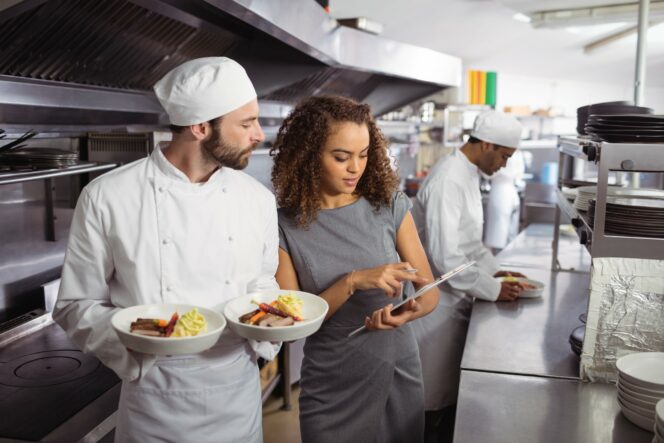
Photo: BetterTable.ca
According to Ben Liegey, CEO and Co-Founder of Vancouver’s BetterTable.ca, avoidable food waste in Canada costs $49 billion a year, with $7 billion coming from the hospitality industry alone.
Liegey was shocked by these statistics and was determined to become part of the solution to this significant issue. With his expertise as an engineer in food and environmental sciences and his business savvy as an executive MBA, Liegey was well suited to launch BetterTable.ca, a company devoted to food waste consultancy. Hailing from France, he also has considerable previous international experience advising on zero waste, sustainability, and a minimized carbon footprint for a variety of food-related organizations. Finally, Liegey worked for SPUD.CA and the Rocky Mountaineer, gaining knowledge about the specific needs and conditions of the hospitality industry in British Columbia.
He feels that Vancouver is the ideal headquarters for BetterTable.ca because of the commitment to sustainability already embedded in the city’s culture and policies. “Consumers here on the west coast, especially in Vancouver, are more aware of environmental issues and want to be more eco-friendly,” Liegey says. The City of Vancouver aims to be the greenest city in the world, and has a long-term plan to be Zero Waste by 2040. Liegey says that compared to other places, Vancouver has been a leader in food waste management. For example, composting has been mandatory for residents and businesses since 2015.

A couple stretches on a beach in Stanley Park, Vancouver. They are preparing to exercise and run along the footpath; Destination Vancouver/Kindred & Scout
However, Liegey still sees considerable room for improvement when it comes to preventing food waste. Most consumers don’t realize that 8% of total CO2 emissions can be attributed to food waste. However, the fact that 66% of food waste in Vancouver could be avoided gives room for optimism—and action.
Establishments in the hospitality industry are increasingly getting on board, not only because they want to be more environmentally-friendly, but also because reducing food waste improves their bottom line. Up until now, many restaurants and hotels have not been aware that food waste is an issue. “Usually, food waste is considered as a small bit at the end of the shift that doesn’t represent much,” Liegey says. With the hard toll of the pandemic and continued staff shortages, the hospitality industry has been in survival mode, with not enough time, energy, and resources to devote to scrutinizing their food practices. However, once they start measuring their food waste, food establishments are astounded. Liegey says food waste in Vancouver restaurants accounts for 7% of food revenue, which is actually more than the average profit margin.

BetterTable.ca offers multiple solutions for members of the hospitality industry to become more proactive about reducing their food waste. They have a food waste prevention blog, with tips, case studies, and recipes for minimizing waste. They also offer e-learning, which instructs on best practices in the Canadian hospitality industry when it comes to food waste. The first module on the impact of food waste on restaurant profitability is free, with additional modules (food waste monitoring, kitchen waste, plate waste, overall strategy implementation) for those wanting to upgrade their knowledge.
The next step involves BetterTable.ca helping restaurants and hotels to track their food waste. Liegey says that currently only 3% of food establishments are measuring their food waste. In partnership with tech company LightBlue, BetterTable.ca offers Food Intel Tech, which collects data and produces reports on food usage for a given establishment. “It basically answers the questions of why food waste is happening, where food waste is happening, and when it’s happening to really make decisions based on data,” Liegey. He adds that restaurants and hotels could also use pen and paper to get started on the data collecting.
And for those who really want to get serious about their food waste, BetterTable.ca can support them in working towards third party international certification for The PLEDGETM on Food Waste. There are four levels of certification (bronze, silver, gold, all-star), with 95 criteria organized into 7 key pillars, which include employee commitment, food handling before preparation, and customer engagement. “It’s a six-month journey where we help hotels and restaurants comply with The PLEDGETM on Food Waste and benefit not only from the food cost reduction savings and the sustainability impact, but also from a way to attract guests and talent,” Liegey explains.
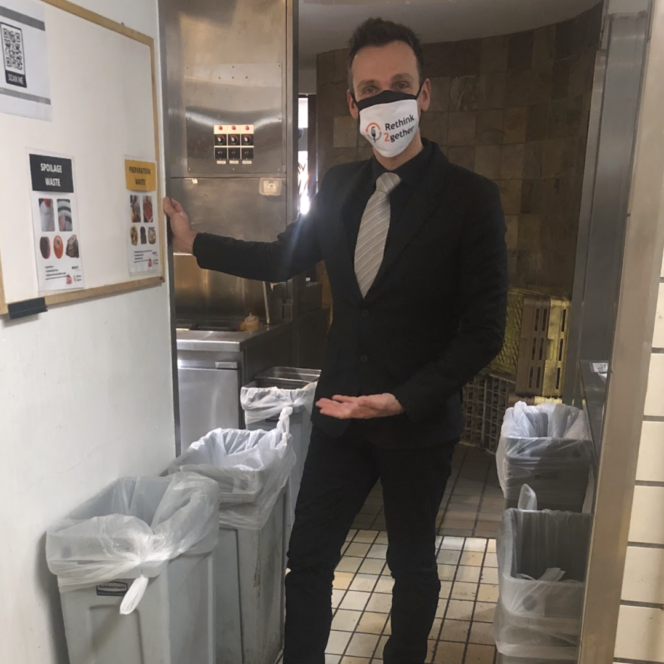
Kitchen audit; Photo: BetterTable.ca
In terms of concrete suggestions for food establishments, Liegey says it’s key to first differentiate between kitchen waste versus plate waste and then track both on a daily basis. He says that plate waste can account for 30 to 70% of a restaurant’s total food waste. In some cases, portions sizes could be made smaller, or a variety of sizes of a different dish, such as a salad, could be offered so a diner could order according to their appetite. Restaurants also need to consider why guests are not eating certain items on their plates. “An empty plate should be seen as a sign of guest satisfaction,” he says, adding, “And having too much plate waste means you didn’t meet the expectations of your guests.”
Consumers can be part of the solution by taking home leftovers, donating excess food to the Greater Vancouver Food Bank, and using an app like TooGoodToGo, which allows customers to purchase restaurant surplus at a discounted price.
When it comes to the kitchen, it’s about examining how ingredients are being used, or how they could be used better. Liegey says spoilage needs to be considered, as well as preparation and cooking methods. Staff need to be trained in food efficiency, so they don’t cut off too much when prepping ingredients, or prepare an excessive amount of food. Liegey says it’s also about becoming more creative with ingredients, especially parts of them that are often composted. For example, carrot tops can be made into pesto. He says, “There are so many recipes and ways to be creative. The more you learn, the more you realize the possibilities are endless.” New uses of ingredients also allow restaurants to differentiate themselves from their competitors by giving diners something they haven’t seen or tasted before.
Kunal Dighe, Executive Chef at JW Marriott Parq Vancouver and the DOUGLAS, Autograph Collection, did the online training offered by BetterTable.ca. He says BetterTable.ca provided him with inspiration and strategies to change the way his kitchens operate. “They helped me to get more educated about food waste,” Dighe says.
Dighe decided to take active steps to reduce food waste after coming across a Zero Hunger goal on the UN website. “I do have a lot of career goals but what I’m doing for the community has a bigger impact. I’m fortunate to hold a position as a chef so I can actually contribute. Even if I contribute a tiny bit, it will create a big impact,” he says.
He shared his goal with his kitchen team, and they all were eager to take food waste even more seriously. They no longer use the word “waste”; instead, they’re constantly looking for ways to prevent and redirect excess food. They now use Vancouver Food Runners, whose volunteers pick up any leftover food so that it can go to worthy non-profit organizations in the city. In the first quarter of their partnership with Vancouver Food Runners, Dighe saw 2000 meals donated. Last year, he estimates about 5000 meals were donated. Dighe is part of a chefs’ committee to brainstorm more solutions for reducing food waste.
He says that consumer perceptions of excess food need to change. Some people think: “If I don’t have enough food, my guests are going to feel bad.” Dighe says a single individual usually can’t eat more than one pound of food, but often at lavish weddings and events, there is significantly more than that ordered per person. “When people start adding extra everywhere, that’s when food waste becomes bigger and bigger,” he says.
In the kitchen, Dighe has regular briefings with staff to talk about food waste and to increase awareness. They now weigh and measure everything for more precision and efficiency with ingredients. And they also find ways to repurpose ingredients, like making a gravy with vegetable trimmings, and banana bread with bananas that have ripened.
Dighe’s case study shows how much of an impact a few strategies can have on reducing food waste. Currently, Liegey is working hard to raise awareness among consumers, businesses, and the government concerning food waste. He’s co-producing a documentary Food Synergy Movie, which will chart the journey from farm to table, sharing seven stories of local companies and people fighting food waste. They range from NADA, a package-free grocery store, to Peko Produce, which sells imperfect produce that would normally get thrown out.
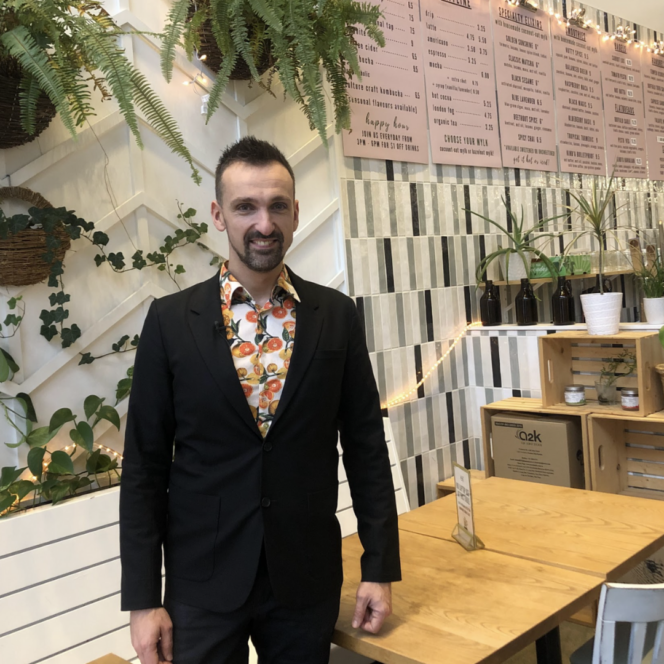
Food Synergy Movie
BetterTable.ca is a member of the Vancouver Food Policy Council. As well, the company has been approached to participate in the City of Vancouver’s Circulation Food Innovation Lab, which has been formed to examine solutions to food waste in Vancouver. It’s free for businesses to join.
Liegey is optimistic that food waste will continue to decline in Vancouver. “There is an increasing interest from the consumer side, from the business side, and from the public decision-maker side,” Liegey says. If everyone in the city works together, food waste can be drastically reduced.











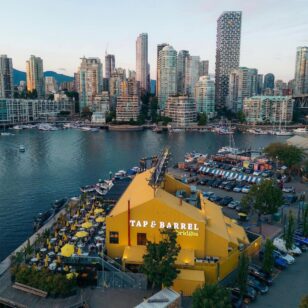



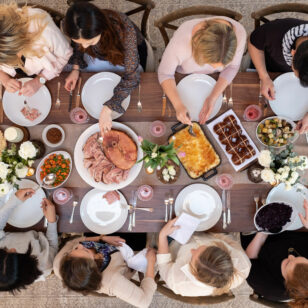

2 Responses to Vancouver’s BetterTable.ca: Reducing Food Waste in the Hospitality Industry